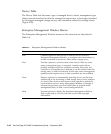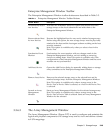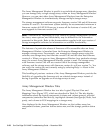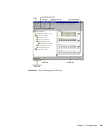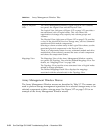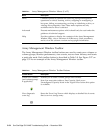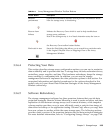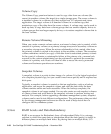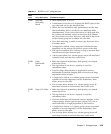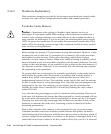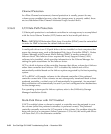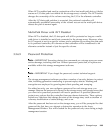
3-56 Sun StorEdge 5310 NAS Troubleshooting Guide • December 2004
Volume Copy
The Volume Copy premium feature is used to copy data from one volume (the
source) to another volume (the target) in a single storage array. The source volume is
a standard volume in a volume copy that accepts host I/O requests and stores
application. The target volume is a standard volume in a volume copy that
maintains a copy of the data from the source volume. A volume copy can be used to
back up data, to copy data from volume groups that use smaller capacity drives to
volume groups that use larger capacity drives, or to restore snapshot volume data to
the base volume.
Remote Volume Mirroring
When you create a remote volume mirror, a mirrored volume pair is created, which
consists of a primary volume on a primary storage array and a secondary volume on
a secondary storage array. When the mirror relationship is first created, data from
the primary volume is copied in its entirety to the secondary volume. The secondary
volume maintains a mirror (or copy) of the data from its associated primary volume.
In the event of a disaster or catastrophic failure at the primary site, a manual role
reversal by the system administrator can be performed to promote the secondary
volume to a primary role. Hosts will then be able to access the newly promoted
volume and business operations can continue.
Snapshot Volumes
A snapshot volume is a point-in-time image of a volume. It is the logical equivalent
of a complete physical copy, but you create it much more quickly and it requires less
disk space.
Typically, a snapshot volume is created so that an application, such as a backup
application, can access the snapshot volume and read the data while the base
volume remains online and user-accessible. When the backup completes, the
snapshot volume is no longer needed. You can also create several snapshot volumes
of a base volume and write data to the snapshot volumes to perform testing and
analysis. For example, before upgrading a database management system, snapshot
volumes can be used to test different configurations. The performance data provided
by the storage management software can also be used to help decide how to
configure the live database system.
3.3.6.6 RAID Levels and Data Redundancy
RAID is an acronym for Redundant Array of Independent Disks. It is a storage
solution in which the same data or information about the data (parity) is stored in
different places on multiple hard disks. By placing data on multiple disks, I/O



